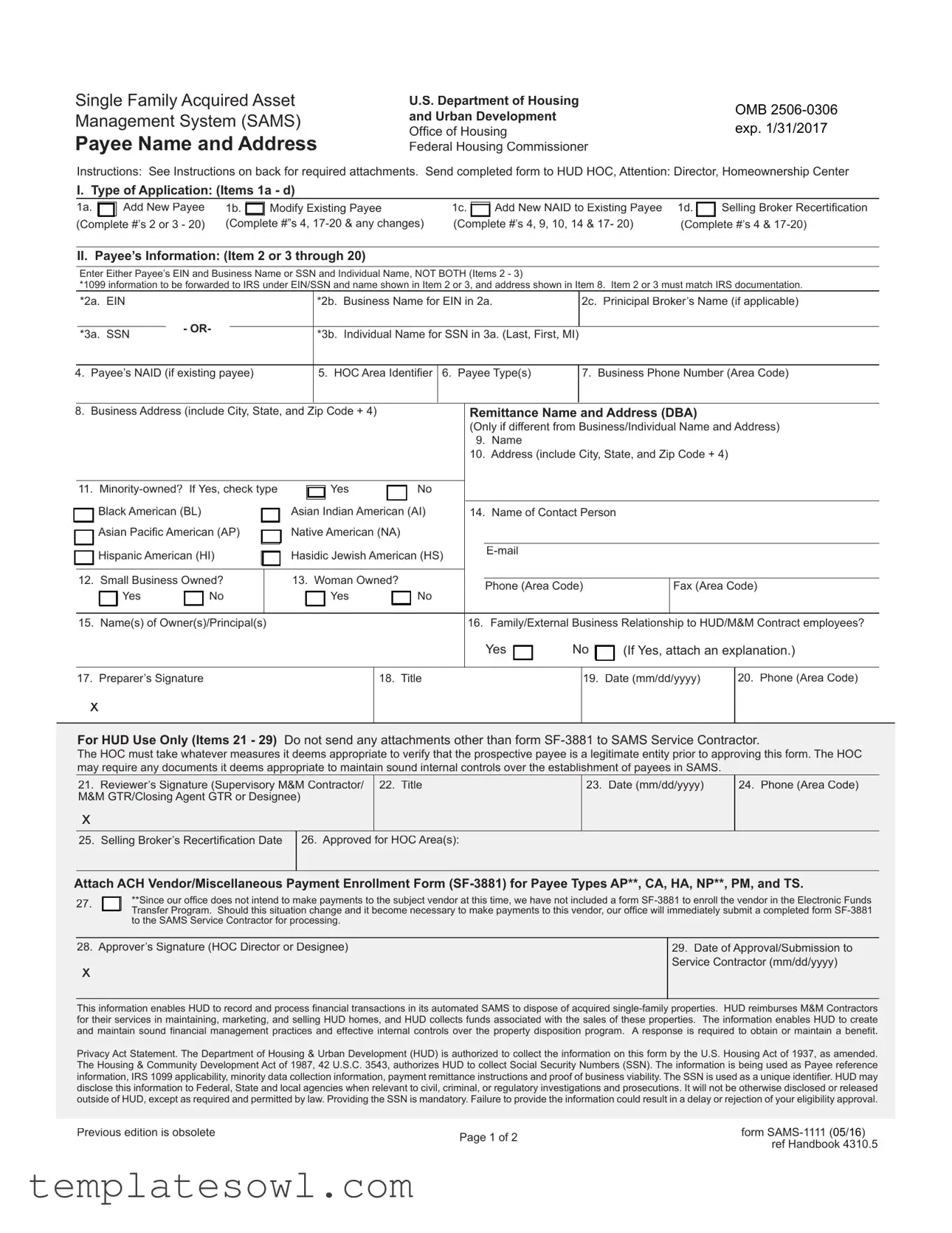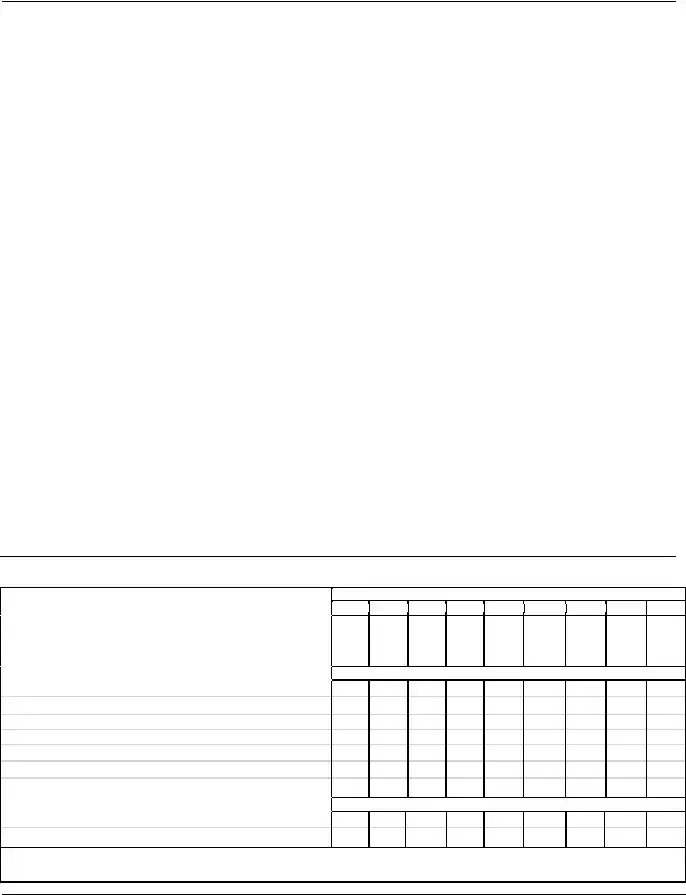Instructions for Completing Form SAMS-1111
Preparer: Complete Items 1 and 2 or 3, and 7 thru 20 legibly in ink or type.
HUD Office Staff: Complete Items 4 thru 6, and 21 thru 29 legibly in ink or type. Sign Items 21 and 28 in ink.
1a. Add New Payee: Check if new payee and complete items 2 or 3 through 20.
1b. Modfiy Existing Payee: Check if modifying information for an existing payee. Items 4 and 17 - 20 and any changes must be completed.
1c. Add New NAID for Existing Payee: Check if linking a new NAID to an existing payee. Items 4, 9, 10 & 17-20 must be completed.
1d. Selling Broker Recertification: Check if recertifying selling broker. Items 4 & 17-20 must be completed.
2a. EIN: Enter the Employer Identifi cation Number for the business.
2b. Business Name: Enter the name of the business as it should appear on checks or IRS form 1099-Misc.
2c. Principal Broker’s Name: Enter the name of the principal broker as it should appear on checks or IRS Form 1099-Misc.
3a. SSN: Enter the individual’s Social Security Number.
3b. Individual Name: Enter the name of the individual as it should appear on checks and IRS Form 1099-Misc.
4.For HUD Use Only. Payee’s NAID: Enter the Name/Address Identifi er(NAID) if existing payee.
5.For HUD Use Only. Enter the HOC Area Identifi er (e.g., PA for Philadelphia Area A).
6.For HUD Use Only. Payee Type: Enter type code from below:
AP=Appraiser |
NP=Nonprofi t organization |
CA=Closing Agent |
PM=M&M Contractor |
GT=Local/State Government |
SB=Selling Broker |
HA =Homeowner Association |
TS=Trade/Service Vendor |
NB =Non-Business/Refund |
|
7.Business Phone Number: Enter the area code and telephone number.
8.Business Address: Enter complete mailing address of the company or individual named in item 2b or 3b above.
9 - 10. Remittance Name and Address: Enter the Name and Address for remittance of compensation only if different from Business/Individual Name and Address. This is typically the Doing Business As (DBA) Name.
11.Minority-owned?: Check “Yes” if the company is minority-owned. Check “No” if not. If yes, check the appropriate minority code for the business. Check only one type.
12.Small Business Owned?: Check “Yes” if the company qualifi es as a small business. Check “No” if not.
13.Woman Owned? : Check “Yes” if the company qualifi es as a woman owned business. Check “No” if not.
14.Contact Person: Enter the name, telephone number, fax number, and email address of the contact person.
15.Names of Owners/Principals: Enter the name(s) of the company’s owner(s) or principal(s). Continue on separate page if necessary.
16.Related Parties: Enter “Yes” if the payee has either a family relationship or an external business relationship with any HUD/M&M Contract employee.
Attach explanation. Enter “No” if no such relationship exits.
17 -20. Preparer’s Signature: Enter legible signature, title, date, and phone number of person completing this form.
For HUD Use Only.
21 - 24. Reviewer’s Signature: Enter legible signature, title, date, and phone number of individual reviewing the form.
25.Selling Broker’s Recertification Date: Date of next scheduled recertifi cation by HUD Offi ce. Enter month and year.
26.Approved for HOC Areas. Enter the HOC area(s) in which the Payee is approved for work.
27.Check if vendor will never receive a payment from HUD.
28 - 29. Approver’s Signature: Enter legible signature of the HOC Director or designee approving form and date form is approved and submitted to the Service Contractor.
Note: 48 CFR 2426 sets forth the Department of Housing and Urban Development’s policy to promote Minority Business Enterprise participation in its procurement program. Executive Orders 11625 and 12432 require monitoring and evaluation of performance and reporting to Congress and the President. While completion of this data is not mandatory, we strongly encourage your cooperation. This data will be used only for reporting purposes. A minority business enterprise is a business which is at least 51 percent owned by one or more minority group members; or, in case of a publicly-owned business, one in which at least 51 percent of its voting stock is owned by one or more minority group members, and whose management and daily business operations are controlled by one or more such individuals. For this purpose, minority group members are those identifi ed on the face of this form.


